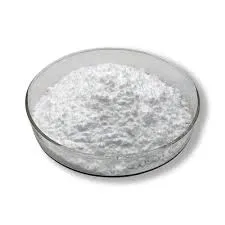
sep . 19, 2024 20:53 Back to list
hpmc safety
HPMC Safety Ensuring Safe Use in Pharmaceutical Applications
Hydroxypropyl methylcellulose (HPMC) is a widely used excipient across the pharmaceutical industry, primarily for its roles as a thickening agent, emulsifier, and stabilizer. While it proves invaluable for enhancing the effectiveness and consistency of formulations, ensuring HPMC's safety in usage is crucial for both manufacturers and consumers.
HPMC is derived from cellulose, a natural polymer found in plant cell walls. Its production process involves modifying cellulose with propylene oxide and methyl chloride, resulting in a non-toxic, biodegradable product that is generally recognized as safe (GRAS) by regulatory agencies, including the FDA. This classification underscores HPMC's role as a safe option in various pharmaceutical applications, such as tablet binding, film coating, and as a disintegrant.
HPMC Safety Ensuring Safe Use in Pharmaceutical Applications
HPMC is also considered safe regarding its use in controlled-release formulations. The polymer's ability to form gels in the presence of water allows for effective drug solubility and release over time. This property not only enhances therapeutic efficacy but also minimizes potential side effects from rapid drug release. Nevertheless, production processes should comply with Good Manufacturing Practices (GMP) to ensure the absence of contaminants or impurities that could compromise patient safety.
hpmc safety

Another essential aspect of HPMC safety is its compatibility with other excipients and active pharmaceutical ingredients (APIs). Manufacturers must conduct thorough compatibility studies to confirm that HPMC will not adversely affect the stability or efficacy of other components in a formulation. Such evaluations play a pivotal role in maintaining safety standards in pharmaceutical products.
The importance of consumer education cannot be overstated when addressing HPMC safety. Patients taking medications containing HPMC should be advised on potential effects, such as gastrointestinal disturbances, albeit these reactions are typically mild. Furthermore, healthcare professionals should be well-informed about HPMC's properties to give patients accurate information and address any concerns they may have.
Finally, it is vital for regulatory agencies to continue monitoring HPMC usage across the pharmaceutical landscape. Ongoing research into its safety profile and potential advancements in formulation technology can facilitate better practices, ultimately ensuring patient safety.
In conclusion, HPMC is a crucial excipient with a robust safety profile, making it integral to pharmaceutical formulations. However, vigilance in monitoring, compatibility testing, and consumer education is essential to uphold safety standards. By addressing these critical areas, the pharmaceutical industry can continue to leverage HPMC's benefits while ensuring the safety and well-being of its consumers.
-
Versatile Hpmc Uses in Different Industries
NewsJun.19,2025
-
Redispersible Powder's Role in Enhancing Durability of Construction Products
NewsJun.19,2025
-
Hydroxyethyl Cellulose Applications Driving Green Industrial Processes
NewsJun.19,2025
-
Exploring Different Redispersible Polymer Powder
NewsJun.19,2025
-
Choosing the Right Mortar Bonding Agent
NewsJun.19,2025
-
Applications and Significance of China Hpmc in Modern Industries
NewsJun.19,2025







